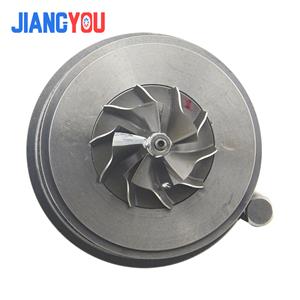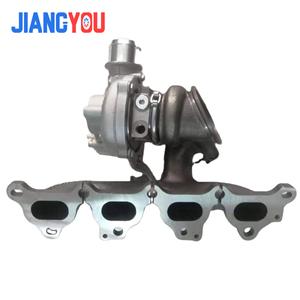- Home
- >
- News
- >
- Product News
- >
- CT26 Turbocharger 17201-74090 17201-74091
CT26 Turbocharger 17201-74090 17201-74091
CT26 Turbocharger 17201-74090 17201-74091 Turbo for Toyota Caldina 3S-GTE GT-Four 2.0 L ST215
The CT26 turbocharger, specifically part numbers 17201-74090 and 17201-74091, is a vital component for enhancing
the performance of the Toyota Caldina 3S-GTE GT-Four 2.0 L ST215 engine.
This turbocharger is well-regarded for its reliability, efficiency, and ability to significantly boost engine power.
In this detailed guide, we will explore the features, benefits, applications, installation process, and maintenance of the CT26 turbocharger.
1. Introduction to the CT26 Turbocharger
Turbocharging has become an essential technology in modern automotive engineering,
providing vehicles with the ability to generate more power without increasing engine size.
The CT26 turbocharger is an excellent example of this technology, designed specifically for the 3S-GTE engine found in the Toyota Caldina GT-Four.
This engine is renowned for its performance, making it a popular choice among car enthusiasts and racers.
2. Key Features of the CT26 Turbocharger
Optimized Design: The CT26 turbocharger features a well-engineered design that maximizes airflow and reduces turbo lag.
This means that drivers can experience a quick response and increased power at lower RPMs, enhancing the overall driving experience.
Durability: Built from high-quality materials, the CT26 is designed to withstand the rigors of high-performance applications.
Its robust construction ensures a long service life, even under demanding driving conditions.
Variable Geometry: The CT26 employs a variable geometry turbine design, which allows for efficient operation across a wide range of engine speeds.
This feature contributes to better fuel efficiency and enhanced power delivery.
Enhanced Boost Pressure: Capable of generating significant boost pressure, the CT26 turbocharger enables the 3S-GTE engine to produce more horsepower and torque,
it ideal for performance-driven applications.
3. Benefits of Using the CT26 Turbocharger
Increased Performance: The most significant benefit of the CT26 turbocharger is the substantial increase in engine performance.
It allows the Toyota Caldina 3S-GTE engine to produce higher power outputs, making it competitive on the road and track.
Improved Fuel Efficiency: By enhancing the combustion process, the CT26 turbocharger contributes to improved fuel efficiency.
This is particularly beneficial for drivers looking to reduce fuel consumption while maintaining high performance.
Reduced Emissions: The CT26 turbocharger helps achieve more complete combustion, resulting in lower emissions.
This is an essential factor for drivers who are environmentally conscious or looking to comply with emissions regulations.
Versatility: The CT26 turbocharger is compatible with a variety of applications, from street performance to motorsport.
Its adaptability makes it a popular choice among tuners and enthusiasts.
4. Applications of the CT26 Turbocharger
The CT26 turbocharger is primarily designed for the following applications:
Toyota Caldina GT-Four: This turbocharger is specifically engineered for the 3S-GTE engine in the Caldina GT-Four,
allowing it to achieve optimal performance levels.
Rally and Racing: Given its performance capabilities, the CT26 is often utilized in rally and racing applications,
where power and reliability are critical.
Street Performance: Car enthusiasts looking to enhance the performance of their Toyota vehicles
frequently choose the CT26 turbocharger for its proven reliability and power boost.
5. Installation of the CT26 Turbocharger
Proper installation of the CT26 turbocharger is crucial for achieving optimal performance and longevity. Below are the key steps to ensure a successful installation:
Preparation: Gather all necessary tools and components for the installation. Ensure that the vehicle is parked on a flat surface and that the engine is cool before starting.
Remove the Old Turbocharger: Carefully detach the existing turbocharger from the engine.
This process may involve removing various components, including exhaust manifolds and intake piping.
Install the CT26 Turbocharger: Position the CT26 turbocharger in place and secure it using the appropriate fasteners.
Make sure to connect all necessary oil and coolant lines, ensuring there are no leaks.
Check for Clearances: After installation, inspect the turbocharger to ensure there are no clearance issues with surrounding components.
Proper alignment is critical to prevent damage during operation.
Testing: Once installed, start the engine and monitor the turbocharger for proper operation.
Listen for any unusual noises and check for oil or coolant leaks to ensure everything is functioning correctly.
6. Maintenance of the CT26 Turbocharger
Regular maintenance is essential to ensure the longevity and performance of the CT26 turbocharger. Here are some important maintenance tips:
Oil Changes: Regularly change the engine oil and use high-quality oil to ensure proper lubrication of the turbocharger.
Clean oil is vital for reducing wear and tear.
Inspect Air Filters: Keep the air intake system, including filters, clean and free from obstructions.
Clogged air filters can reduce performance and efficiency.
Monitor Boost Pressure: Keep an eye on the boost pressure to ensure it remains within the manufacturer’s specifications.
Abnormal boost levels can indicate potential issues with the turbocharger.
Check for Leaks: Regularly inspect for oil and coolant leaks around the turbocharger. Early detection of leaks can prevent more significant problems down the line.
Professional Inspections: Consider having the turbocharger inspected by a qualified technician during routine engine maintenance.
They can identify potential issues before they become serious problems.
7. Common Issues and Troubleshooting
While the CT26 turbocharger is a reliable component, issues can arise over time. Here are some common problems and troubleshooting tips:
Turbo Lag: If you experience significant turbo lag, check for possible boost leaks in the intake system or ensure that the wastegate is functioning correctly.
Oil Leaks: Oil leaks can occur if the seals wear out. Inspect the oil feed and return lines for any signs of wear and replace them as needed.
Loss of Power: A sudden loss of power may indicate a failing turbocharger. Conduct a thorough inspection to check for boost pressure drops or mechanical failures.
8. Conclusion
The CT26 turbocharger is an outstanding component for enhancing the performance of the Toyota Caldina 3S-GTE GT-Four 2.0 L ST215 engine.
With its optimized design, durability, and efficiency, it provides significant benefits for various applications, from street performance to motorsport.
Proper installation and maintenance are crucial for ensuring its longevity and optimal performance.
By investing in the CT26 turbocharger, car enthusiasts can enjoy increased power, improved fuel efficiency, and reduced emissions,
making it a valuable addition to any performance-oriented vehicle. Whether on the road or the racetrack, the CT26 turbocharger is sure to deliver exceptional results.










